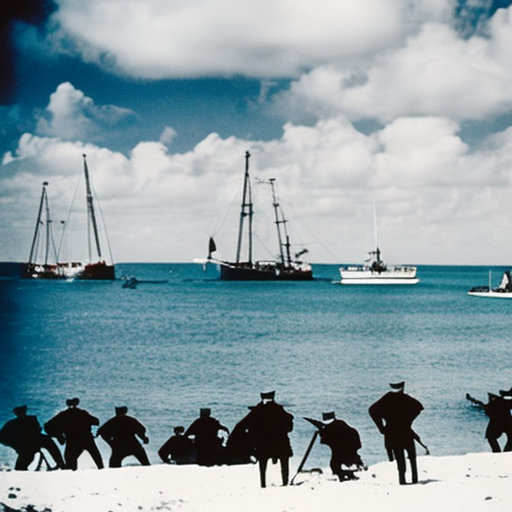Summary:
The Bay of Pigs Invasion was a failed military operation conducted by the United States in 1961, with the aim of overthrowing the Cuban government led by Fidel Castro. The invasion, which took place at the Bay of Pigs on the southern coast of Cuba, was a significant setback for the U.S. and had far-reaching consequences for both countries.
Background:
After the Cuban Revolution in 1959, Fidel Castro came to power and implemented a series of socialist reforms. This led to strained relations between Cuba and the United States, as the U.S. government viewed Castro’s regime as a threat to its interests in the region. In response, the U.S. began supporting Cuban exiles who were opposed to Castro’s government and sought to overthrow it.
Planning and Preparation:
The Central Intelligence Agency (CIA) was tasked with organizing and training a force of Cuban exiles to carry out the invasion. The plan was to launch a surprise attack on Cuba, with the hope that it would spark a popular uprising against Castro. The CIA trained the exiles in Guatemala and equipped them with weapons and supplies.
The Invasion:
On April 17, 1961, around 1,500 Cuban exiles, known as Brigade 2506, landed at the Bay of Pigs. However, the element of surprise was lost, as the Cuban government had been aware of the invasion plans for some time. The Cuban military quickly mobilized and engaged the invaders in fierce combat. The exiles were outnumbered and outgunned, and their initial gains were soon reversed.
Failure and Aftermath:
The invasion was a complete failure. Within three days, the Cuban military had defeated the exiles and captured or killed most of them. The U.S. government was heavily criticized for its role in the operation, both domestically and internationally. The failure of the Bay of Pigs Invasion had several significant consequences.
Consequences:
Firstly, it strengthened Fidel Castro’s position in Cuba and allowed him to consolidate his power. The invasion also led to increased tensions between the U.S. and Cuba, as well as between the U.S. and the Soviet Union, which had supported Castro’s government. The incident further fueled the Cold War rivalry between the two superpowers.
Lessons Learned:
The Bay of Pigs Invasion was a major embarrassment for the U.S. government and highlighted the limitations of covert operations. It demonstrated the importance of accurate intelligence and the need for careful planning and coordination. The failure of the invasion also underscored the risks of military intervention and the potential for unintended consequences.
Legacy:
The Bay of Pigs Invasion had a lasting impact on U.S.-Cuba relations. It solidified Castro’s grip on power and pushed Cuba further into the Soviet sphere of influence. The failed invasion also contributed to the escalation of the Cuban Missile Crisis in 1962, which brought the world to the brink of nuclear war.
Conclusion:
The Bay of Pigs Invasion was a failed military operation that had significant consequences for both the United States and Cuba. It was a major setback for the U.S. government and highlighted the challenges of covert operations. The invasion strengthened Castro’s regime and deepened the Cold War tensions between the U.S. and the Soviet Union. The legacy of the Bay of Pigs Invasion continues to shape U.S.-Cuba relations to this day.












